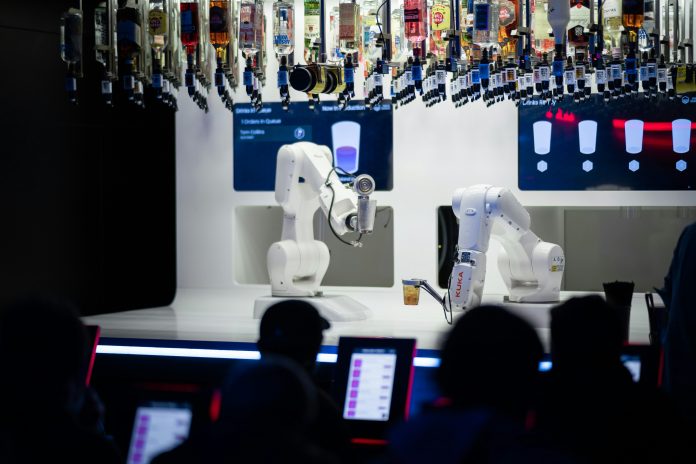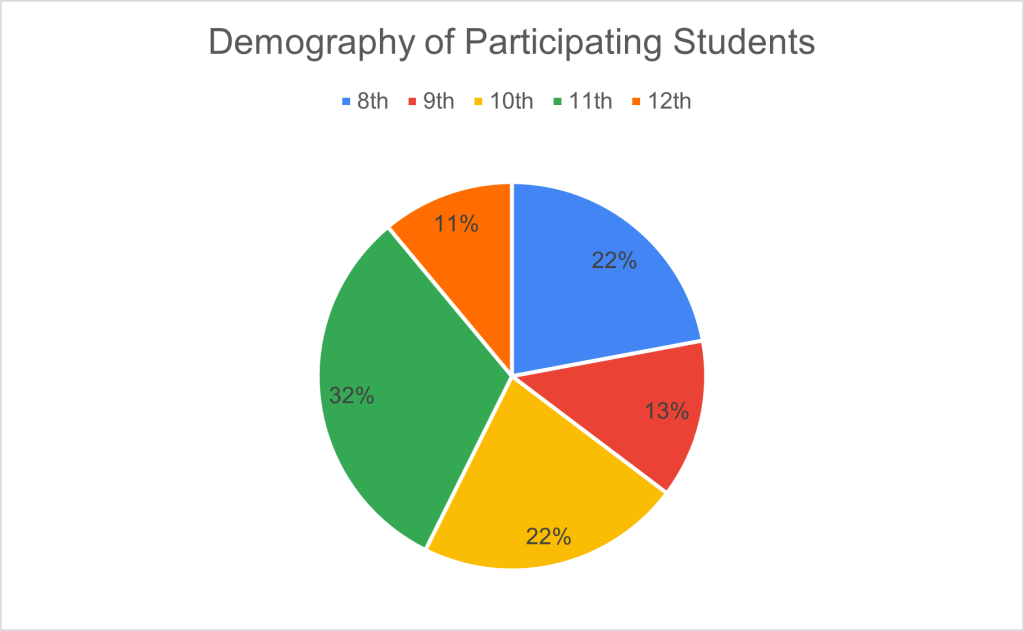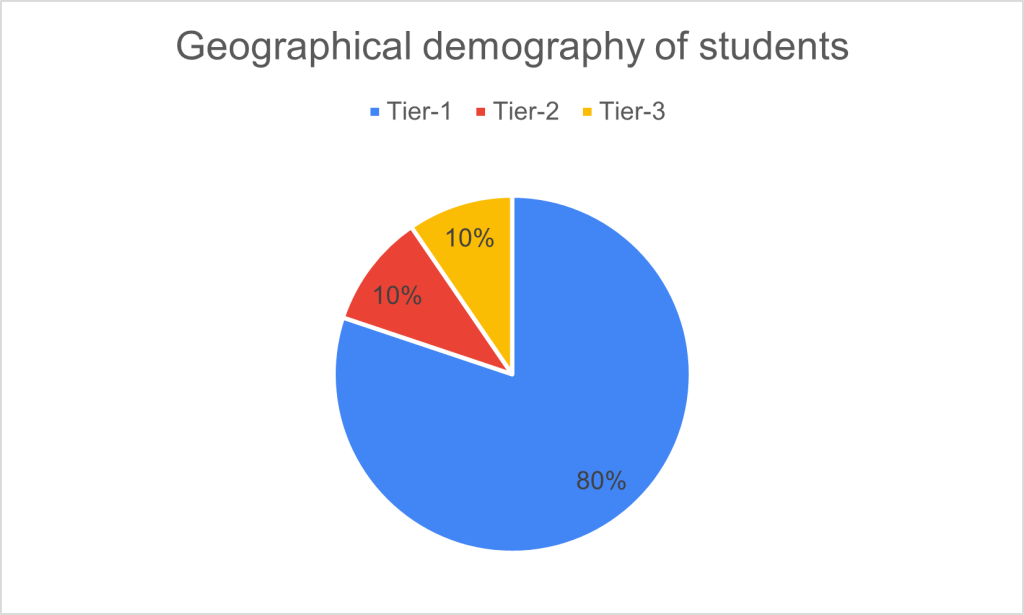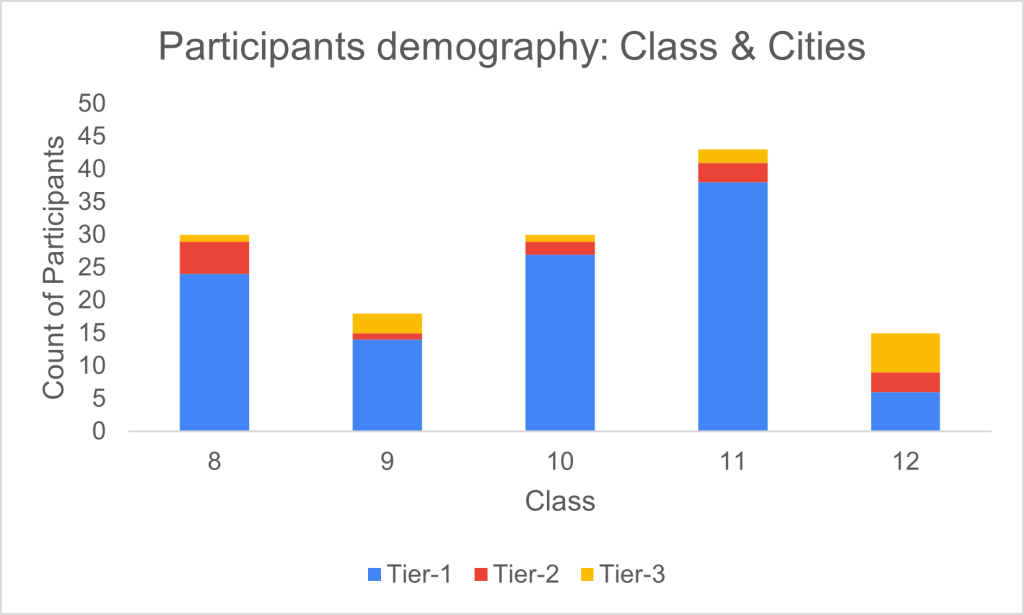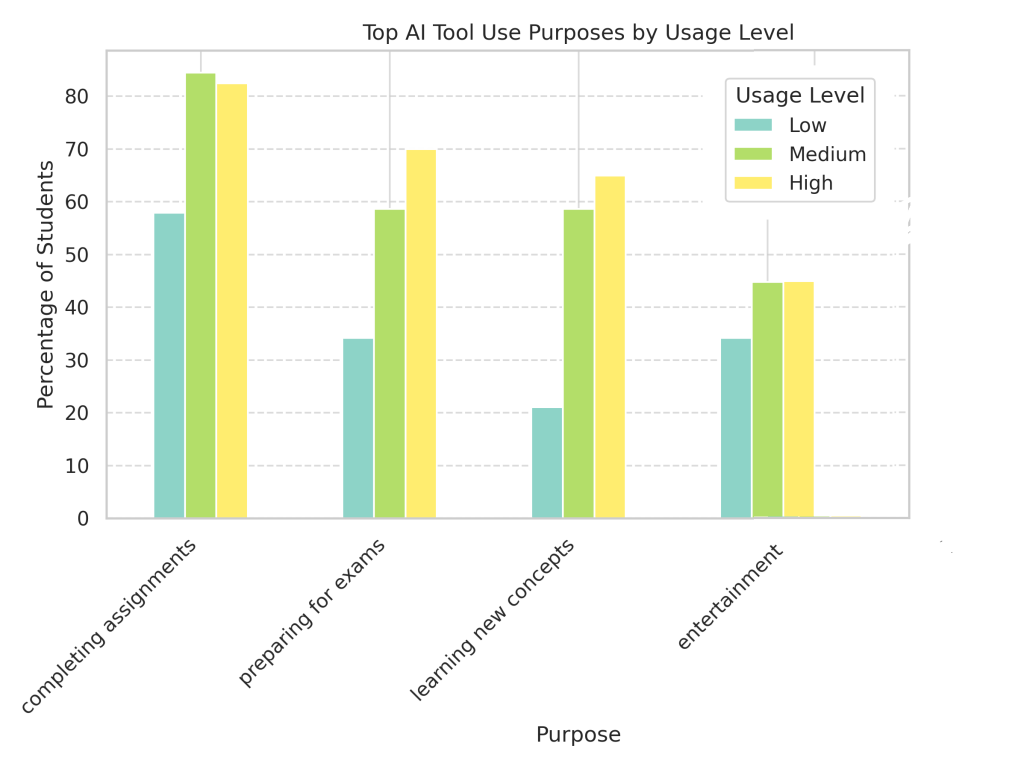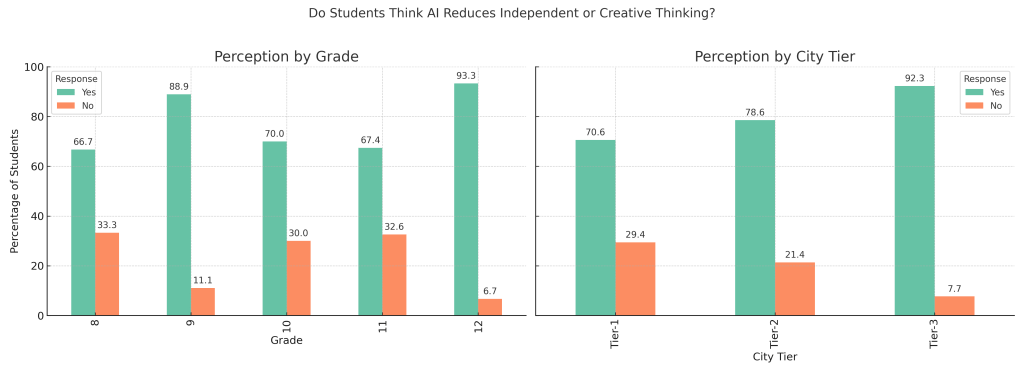Abstract
Generative artificial intelligence (AI) has rapidly become an integral part of youth digital behavior, with increasing adoption among students for academic and creative tasks. This study investigates how high school students in India across urban, semi-urban, and rural settings are adopting generative AI tools such as ChatGPT, Gemini, and Canva. The research explores the perceived benefits, such as improved efficiency and learning support, and concerns including overdependence, accuracy issues, and ethical implications. A structured survey of 136 students from grades 8 to 12 was conducted using a mixed-methods approach, combining descriptive statistics and thematic analysis of open-ended responses. The findings reveal significant grade-wise differences in AI usage patterns and attitudes, with younger students more concerned about the influence of AI on critical thinking. The study contributes to ongoing discussions on digital literacy, AI ethics in education, and the need for a school-led framework to guide responsible AI use. Limitations regarding sample distribution and lack of inferential statistics are acknowledged. This research provides insights to help policymakers and educators develop informed strategies for integrating AI meaningfully in secondary education.
Keywords: Generative Artificial Intelligence, Indian High school students, Benefit & Concern of AI, AI ethics
Introduction
The rise of artificial intelligence (AI) accelerated in November 2022, when OpenAI released ChatGPT, making AI more accessible and useful to the public. By 2023, AI adoption had surged, integrating seamlessly into search engines, workplace tools, and social media platforms like Instagram and Facebook. This rapid growth has transformed the way people interact with technology, presenting both opportunities and challenges.
Teenagers, particularly those in high school, represent a pivotal demographic in this AI revolution. As early adopters and experimenters, their engagement with AI tools not only reflects current trends but also shapes future expectations. AI-powered platforms like ChatGPT, Gemini, Canva, Grammarly, and Copilot are increasingly used for assignments, brainstorming, coding, exam preparation, and content creation. However, alongside these benefits, educators and researchers have raised alarms about risks related to digital dependency, ethical misuse, decreased originality and compromised critical thinking1.
While international studies2 have explored generative AI usage among youth, very limited data exists on the Indian student population despite India being one of the world’s fastest-growing digital economies. With the country’s stark digital divide across urban and rural regions, it becomes essential to explore how access, perception, and application of AI differ across geographic and socioeconomic backgrounds. This study specifically focuses on Indian high school students, whose cognitive abilities, decision-making processes, and academic pressures evolve significantly between grades 8 and 12.
Research Questions:
- How familiar are Indian high school students with generative AI tools, and how frequently do they use them?
- What benefits and concerns do student associate with AI usage?
- Are there significant differences in AI usage patterns based on grade and city tier?
- How do students perceive the role of AI in education and what future expectation they have?
By addressing these questions, the study aims to contribute to educational and policy-level discussions on AI integration. It also explores the cognitive, ethical, and academic implications of AI adoption at a critical stage in youth development, offering insights for educators to foster balanced and informed AI use among students.
Literature Review
The growing use of generative AI among teenagers has prompted a range of studies examining its impact on education, behavior, and cognitive development. However, most of these investigations are either based in Western contexts or focused on college-level students, with limited attention to high school students in India. This section critically reviews existing literature on AI usage among youth, identifies gaps, and establishes the relevance of this study.
The study done by hopelab3. explores the way young people, ages 14-22, use and perceive generative AI. It highlights both the benefits and concerns associated with AI, such as its use for schoolwork, creativity, and information gathering, as well as issues like cheating and privacy. The study also revealed demographic differences, with Black and LGBTQ+ youth using AI more frequently and diversely. Notably, concerns such as privacy, accuracy, and ethical misuse were widely shared, suggesting that AI’s benefits are tempered by risks especially for younger users with limited digital literacy.
Alasgarova and Rzayev (2024)4 explored the role of Artificial Intelligence in shaping high school students’ motivation2 investigates the integration of AI technologies, such as ChatGPT4, in high school education and their impact on student motivation. It highlights the benefits of AI in enhancing learning by addressing students’ needs for competence, but also points out challenges such as academic dishonesty, superficial learning, and the erosion of student autonomy and relatedness. The study emphasizes the importance of ethical engagement, digital literacy, and intrinsic motivation in AI integration, advocating for balanced educational policies that leverage AI’s potential while addressing its misuse.
Famaye et al. (2024) conducted a qualitative analysis of student comments on a New York Times article about banning ChatGPT in schools5. They applied the Technology Acceptance Model (TAM2) to interpret how students evaluate AI based on its perceived usefulness, personal experiences, and societal trends. The findings underscore students’ nuanced understanding of AI’s pros and cons and emphasize the need to involve students in policymaking about AI in education.
Walter, Y (2024) explores AI’s transformative role in education, emphasizing the importance of AI literacy, prompt engineering, and critical thinking6. It highlights personalized learning benefits, challenges like educator training and curriculum adaptation, and strategies for integrating AI skills into teaching, supported by a Swiss university case study and practical implementation suggestions.
Kenchakkanavar et al. (2024) examines the transformative role of AI in India’s education system, highlighting its ability to enhance teaching methods, support sustainable education, and drive a paradigm shift toward technology-driven learning7. It discusses AI’s applications, challenges, and its integration into Higher Education Institutes (HEIs) for research, teaching, and evaluation. The study emphasizes the need for proper infrastructure and familiarity with disruptive technologies like AI, blockchain, and machine learning to sustain this revolution.
Pan, S (2024) explores role of AI in sustainable education of Indian higher education system8. It concludes the AI is helping students promotes quicker and better teaching to learners. It also suggests that AI has created gap between teacher-teacher and teacher-students as well and urges to maintain digital balance between pro and con of AI adoption.
Despite these insights, few studies have examined the usage of AI among Indian high school students specifically. Moreover, most existing research focuses on either benefits or risks in isolation. There is a need for integrated studies that
Analyze both perspectives, while also accounting for factors such as geographic location, age, academic pressure, and school policy. This study addresses these gaps by investigating the benefits and concerns of AI usage among Indian high school students from diverse regions and grades. It also contributes to the conversation on digital equity, AI ethics, and youth development, offering a contextualized understanding of how generative AI is shaping learning habits and cognitive attitudes in a country with vast socio-educational diversity
Materials and Methods
Methodology used for survey and result analysis is described below.
Research Design
This study employed a cross-sectional descriptive survey design to explore the use, benefits, and concerns associated with generative artificial intelligence (AI) among high school students in India. A structured, self-administered questionnaire was developed and disseminated online to collect both quantitative and qualitative data. The survey design allowed for broad geographic reach and inclusion of students across multiple educational levels and city tiers.
Survey Instrument development
The survey titled “Exploring AI Use in High Schools: Benefits and Concerns” was designed specifically for this study, informed by existing literature on youth technology use and AI in education. The questionnaire consisted of 17 questions (included in appendix section), combining multiple-choice, Likert-scale, and open-ended formats. It was structured into six sections-
Introduction: Consent, Purpose and anonymity assurance
Demographics: Grade, location, School, board
AI Awareness & Adoption: Familiarity with AI, Frequency of use, tool preference
Applications & Benefits: Use in academics, perceived advantages
Concerns & Challenges: Ethical dilemmas, accuracy concerns, perceived advantages, school restriction
Future Expectations: Student hopes, desire improvement, integration into education
To ensure clarity and relevance, the survey was pilot tested with five students from grades 9–11. Minor modifications were made based on their feedback. The final survey was administered using Google Forms.
Participants and sampling
The sample consisted of 136 students from grades 8 to 12 across India. Participants were recruited through school networks, youth groups, and social media platforms using a convenience sampling strategy. No personal identifiers were collected, ensuring participant anonymity and voluntary participation.
To capture geographic and demographic diversity, participants were categorized into three city tiers based on population and urbanization:
Tier 1 (Metropolitan): Population >10 million (e.g., Delhi, Bengaluru)
Tier 2 (State Capitals): Population 5–10 million (e.g., Raipur, Bhopal)
Tier 3 (Small Towns): Population <1 million (e.g., Korba, Banki)
Data Analysis
Quantitative data were analyzed using descriptive statistics, including frequency distributions and percentages. Responses were grouped and compared across grade levels and city tiers. visual graphs were used to visualize patterns in AI awareness, tool preferences, and concerns.
To provide deeper insights, a thematic analysis was conducted on open-ended responses. Student answers were coded inductively to identify recurring themes such as accuracy concerns, ethical dilemmas, reliance on AI, and desire for regulation.
Inferential statistics such as ANOVA and Chi-square test were used to analyze response for few questions.
Results
Demography of Participants
Survey was primarily responded by grade 8 to 12 students from 10+ cities across India. 80.1% of participants are from Tier-1 cities, 10.3% from tier-2 cities and 9.6% from Tier-3 cities (Figure-1 & Figure-2). Distribution of demography is consistent across grade of students (Figure-3)
AI Awareness & adoption
Overall, most participants are familiar with AI as shown in Figure-4. Analysis of AI familiarity across grade levels reveals that the majority of students identify as “Somewhat Familiar”, indicating widespread exposure but limited depth of engagement. A clear upward trend in “Very Familiar” responses is observed from Grade 9 to Grade 11, suggesting that older students are more likely to explore and adopt AI tools meaningfully. Grade 11 stands out with the highest proportion of students reporting strong familiarity. In contrast, Grade 8 shows a greater share of students in the “Not Familiar” category, underscoring the need for early AI education in junior secondary levels. Interestingly, Grade 12 exhibits a decline in “Very Familiar” responses alongside an increase in “Somewhat Familiar,” possibly reflecting reduced exploratory use due to academic demands. As shown in Table 1, while these trends are visually apparent, they are not statistically significant based on current sample size, indicating the need for broader data collection to validate these patterns.
Figure 4: Familiarity with AI tool
| Source | F-value | p-value | Conclusion |
| Grade | 1.15 | 0.336 | Not statistically significant |
| City Tier | 1.09 | 0.341 | Not statistically significant |
| Grade × Tier | 1.57 | 0.142 | Not statistically significant |
Figure 5 illustrates the frequency of AI tool usage among students, revealing that Grade 11 students are the most active users, with 48% reporting daily use. In contrast, Grade 8 shows the lowest engagement, with a higher proportion of students using AI tools monthly or never. City-wise, students from Tier-1 cities lead in daily usage, reflecting greater access and awareness, while those from Tier-2 and Tier-3 cities show more weekly and monthly usage, indicating growing but less consistent adoption. As shown in Table 2, a two-way ANOVA indicates only marginal significance for grade-level differences in frequency of use. Chi-square analysis resulted in p-value of 0.03 for grade level and 0.64 for city-tier further confirming above conclusion.
Furthermore, the correlation between AI familiarity and frequency of use was found to be weakly positive (correlation coefficient = 0.08), suggesting that increased usage does not strongly predict higher familiarity.
| Source | F-value | p-value | Interpretation |
| Grade | 2.35 | 0.058 | Marginally significant |
| City Tier | 0.4 | 0.672 | Not significant |
| Grade × Tier | 1.8 | 0.083 | Marginal interaction |
Survey findings reveal distinct patterns in AI tool usage across both grade levels and city tiers. ChatGPT emerged as the most widely used tool, with near-universal adoption among Grade 11 students. Tools like Canva and Duolingo showed broad adoption across grades, supporting general academic and creative tasks. In contrast, tools such as Gemini and Grammarly saw increased usage in Grades 10 to 12, suggesting a correlation with more advanced academic writing and research needs. Students in Grades 8 and 9 reported lower usage overall, indicating a potential gap in early AI exposure. City-wise, students from Tier-1 cities reported significantly higher usage of all major tools, especially ChatGPT, Grammarly, and Gemini, pointing to better access and integration into learning environments. Tier-2 cities reflected moderate engagement, particularly with ChatGPT and Duolingo, while Tier-3 cities showed minimal adoption, highlighting a clear digital divide in AI access and familiarity.
Application & Benefit
Figure-7 shows application of AI across grades and city. Analysis of survey data reveals that students predominantly use AI tools for completing assignments and preparing for exams, with usage intensity increasing from Grades 8 to 12. Creative applications like story generation and design are more popular among younger students (Grades 8–10), while academic-focused use dominates in higher grades. City-wise, Tier-1 students show the broadest and most frequent use of AI across all categories, reflecting greater access and familiarity. In contrast, Tier-3 students show limited and task-specific use, primarily for assignments, highlighting a digital access divide.
Students report that AI tools help primarily with saving time, improving work quality, and understanding concepts, with these benefits increasing in Grades 10 and 11. Creative gains are more common in middle grades, while Grade 8 shows the lowest perceived benefits, indicating a need for early exposure. Tier-1 city students report the highest benefits across all categories, whereas Tier-2 and Tier-3 show lower but growing engagement, highlighting a digital access gap (Figure-8).
Analysis reveals a clear relationship between frequency of AI tool usage and the breadth of both application and perceived benefit. Students who use AI tools frequently (daily) report a wider range of use cases, especially for academic tasks such as completing assignments, exam preparation, and learning new concepts. In contrast, low-frequency users tend to limit their use to simpler or entertainment-focused tasks. Similarly, high-frequency users are more likely to report benefits such as saving time, improved work quality, and better concept understanding, indicating that increased engagement with AI tools correlates with deeper academic utility and impact. These findings suggest that encouraging regular and purposeful use of AI could enhance its educational value for students. (Figure-9)
Concern and Challenges
Survey findings highlight several challenges students face when using AI tools. The most common issues include concerns about accuracy and reliability, and a fear of becoming too dependent on AI, particularly among students in Grades 10 and 11 and those from Tier-1 cities, where AI usage is highest. Some students also report difficulties in understanding how to use AI tools, and challenges related to internet or device access, especially in Tier-2 and Tier-3 areas, underscoring a digital access gap. These challenges suggest that while AI adoption is growing, there is a need for better digital infrastructure, user training, and guidance to support safe and effective use (figure-10).
Table-3 shows distribution of concern shown by school or teacher for AI use in school work. Chi-Square test resulted in Chi-square Statistic: 5.164, Degrees of Freedom: 4, P-value: 0.2708 for grade and Chi-square Statistic: 1.702, Degrees of Freedom: 2, P-value: 0.4271 for city tier. This shows No significant variation in concerns raised by teachers across grades and city tier.
Students views on the ethical use of AI for schoolwork vary by grade and city tier. In Tier-3 cities, acceptance is highest, with 100% of Grade 10 students viewing it as ethical. In contrast, students in Tier-1 cities show more skepticism over half of Grade 10 students and nearly 45% of Grade 11 students consider it unethical. This suggests that regional context and maturity influence ethical perceptions, highlighting the need for targeted AI ethics education (Figure-12)
Most students perceive AI tools as highly accessible, with ratings of 4 and 5 dominating across all grades and city tiers. Accessibility perception increases with grade level, suggesting older students may have more exposure or confidence in using digital tools. Tier-1 and Tier-2 students show similar patterns, while Tier-3 students also report strong accessibility despite fewer resources, indicating the growing reach of AI tools across regions (Figure-13).
Chi Square test shows a significant correlation between students concerns about AI reducing independent or creative thinking and their views on the ethical use of AI for schoolwork (p = 0.001). This means students who worry that AI might hinder creativity are more likely to question its ethical use. Tier-1 cities had shown more significant correlation (p = 0.0009) and tier-2 & 3 cities have shown no correlation.
| What grade are you in? | No | Yes |
| 8 | 56.7 | 43.3 |
| 9 | 44.4 | 55.6 |
| 10 | 53.3 | 46.7 |
| 11 | 34.9 | 65.1 |
| 12 | 60 | 40 |
| Tier City | No | Yes |
| Tier-1 | 45.9 | 54.1 |
| Tier-2 | 64.3 | 35.7 |
| Tier-3 | 46.2 | 53.8 |
Future Expectations from AI
More than 98% students felt that AI will play much significant role in student’s life (Figure-14). But only 35% students agreed that AI should be integrated in school curriculum, while ~18% didn’t agree (Figure-15). A significant number of students chose a neutral stance regarding the inclusion of AI in curriculum. This may reflect uncertainty, or lack of strong opinion considering both pro and con of AI. The neutral response highlights the need for greater awareness and orientation before introducing AI formally into the curriculum.
Students mentioned below expectation from future development of AI. About 27% students didn’t know or didn’t provide response to this question.
- Accuracy: About 30% students emphasized the need for improved accuracy in AI responses. This was a common theme throughout the responses.
- Reliability: About 11% students want AI tools to provide reliable and trustworthy information, with clear citations from reputable sources.
- User Friendliness: 7% students mentioned a desire for AI tools to be more user-friendly and easier to navigate.
- Context Awareness: 6% mentioned that improved context understanding and reasoning capabilities were highlighted as important features.
- Offline Modes: The ability to use AI tools offline was mentioned as a desirable feature by 4% students.
- Emotional Intelligence: Enhancing AI’s emotional intelligence to better understand and respond to user sentiments was suggested by 3% students.
- Regulation and Control: There were calls for better regulation and control over AI-generated content to ensure it is appropriate and accurate by 3% students.
Discussion
The survey collected responses from 136 students across grades 8 to 12 from diverse geographical regions in India, categorized into Tier-1, Tier-2, and Tier-3 cities. The sample was dominated by Tier-1 city respondents, with 80% (n=109) of students from Tier-1, 10% (n=14) from Tier-2, and 10% (n=13) from Tier-3 cities. Bengaluru alone accounted for over 75% of total responses. In terms of academic distribution, Grade 11 had the highest participation (n=43), followed by Grades 10 and 8 (n=30 each), Grade 9 (n=18), and Grade 12 (n=15). The majority of students (82%) reported studying under the CBSE curriculum, with smaller representations from State Boards (7%) and ICSE/IB (11%).
Regarding AI familiarity, 76% of respondents indicated that they were either “somewhat familiar” or “very familiar” with AI tools. A substantial portion of students (41%) reported using AI tools daily, with the highest daily use observed among Grade 11 students (48%). Tools such as ChatGPT, Grammarly, Duolingo, Canva, and Meta AI were frequently mentioned, and students typically reported using multiple tools in combination. The most common purposes cited for AI use were completing assignments (88%), preparing for exams (70%), and learning new concepts (67%). Tier-1 students reported higher frequency and broader use of AI tools compared to those from Tier-2 and Tier-3 cities, reflecting disparities in digital access and exposure.
When asked about the benefits of AI, 73% of students reported that AI tools had helped them save time, and 65% believed AI improved the quality of their work. However, the responses also reflected apprehensions. Around 44% of students believed that using AI might reduce their ability to think independently or creatively. This concern was more prominent in higher grades, especially Grades 10 and 11. On the ethical question of AI use in schoolwork, 39% of students felt it was not ethical, while 61% either supported its use or remained neutral. A cross-analysis showed that students who believed AI hampers creativity were also more likely to find its academic use unethical.
Institutional support for AI usage appeared limited. Only 38% of respondents said their school provided guidance on using AI responsibly. Furthermore, 45% indicated that their teachers or school had raised concerns about AI usage, with the primary issues revolving around accuracy, over-reliance, and academic dishonesty. Challenges reported by students included lack of access to devices or the internet (22%), difficulty understanding how to use the tools (17%), and concerns about accuracy (29%). Notably, 28% of students stated they faced no significant challenges, with this proportion being higher among Tier-1 students.
Students were also asked to rate their agreement with integrating AI tools into the school curriculum using a 3-point Likert scale (1 = disagree, 2 = neutral, 3 = agree). The majority (54%) selected “3”, expressing agreement, while 31% remained neutral and 15% disagreed. Furthermore, 92% of respondents believed AI would play a more significant role in education over the next five years. When asked about desired improvements in AI tools, students suggested better offline functionality, enhanced accuracy, greater personalization, and more student-centric use cases.
Overall, the results indicate high AI adoption among urban school students and a positive attitude toward its educational potential. However, ethical concerns, lack of formal guidance, and digital inequity between city tiers present significant challenges. These findings suggest a growing need for structured digital literacy programs, equitable access initiatives, and clear ethical frameworks to guide responsible AI use in school education.
While this study provides valuable insights into the perceptions and usage of AI tools among school students, it is not without limitations. The sample is heavily skewed toward Tier-1 cities, particularly Bengaluru, which may limit the generalizability of the findings to students in rural or less digitally connected regions. The overrepresentation of CBSE curriculum students may also introduce bias, as other boards might have different pedagogical approaches and digital exposure. Additionally, as the survey relied on self-reported data, there is a possibility of social desirability bias or inaccurate reporting, especially on subjective questions like ethical views or tool usage frequency.
Future studies could aim for a more balanced and stratified sampling across city tiers and educational boards to enhance representativeness. Longitudinal research tracking student behavior over time could also help understand the evolving role of AI in learning. Moreover, qualitative methods such as student interviews, focus groups, and teacher perspectives can add depth to the findings and explore context-specific nuances. Research should also investigate the effectiveness of school-based digital literacy programs and evaluate interventions aimed at addressing ethical, cognitive, and accessibility challenges of AI integration in education.
Appendix: Survey Questions
Demographic & Background-
- What grade are you in?
- Which City/town do you live in?
- Which Curriculum does your school follow?
Awareness and Adoption of AI-
- How familiar are you with AI tools?
- Which of the following AI tools have you used? (Multi choice response)
- How often do you use AI tools?
Application and Benefits of AI-
- What do you use AI tools for? (Multi choice response)
- How has using AI tools helped you? (Multi choice response)
Concerns and Challenges-
- What challenges have you faced when using AI tools? (Multi choice response)
- Are there any concerns your teacher or school has raised about using AI tools?
- Do you think using AI tools might reduce your ability to think independently or creatively?
- Do you think it is ethical to use AI for schoolwork?
- How much do you agree with the idea of integrating AI tools into school curriculums?
- Does your school provide guidance on using AI responsibly?
Future expectations-
- How accessible do you think AI tools currently are to students?
- Do you think AI will play a more significant role in education in next 5 years?
- What additional features or improvements would you like AI tools to have?
References
- Gokcearslan, S., Tosun, C., & Erdemir, Z.G. (2024). Benefits, challenges, and methods of Artificial Intelligence (AI) chatbots in education: A systematic literature review. International Journal of Technology in Education (IJTE), 7(1), 19-39. https://doi.org/10.46328/ijte.600 [↩]
- Alasgarova, R. & Rzayev, J. (2024). The role of Artificial Intelligence in shaping high school students’ motivation. International Journal of Technology in Education and Science (IJTES), 8(2), 311-324. https://doi.org/10.46328/ijtes.553 [↩]
- Teen and Young Adult perspective on generative AI. https://www.commonsensemedia.org/sites/default/files/research/report/teen-and-young-adult-perspectives-on-generative-ai.pdf, (2024). [↩]
- Alasgarova, R. & Rzayev, J. (2024). The role of Artificial Intelligence in shaping high school students’ motivation. International Journal of Technology in Education and Science (IJTES), 8(2), 311-324. https://doi.org/10.46328/ijtes.553 [↩]
- Famaye, T., Bailey, C.S., Adisa, I., & Irgens, G.A. (2024). “What makes ChatGPT dangerous is also what makes it special”: High-school student perspectives on the integration or ban of artificial intelligence in educational contexts. International Journal of Technology in Education (IJTE), 7(2), 174-199. https://doi.org/10.46328/ijte.651 [↩]
- Walter, Y. Embracing the future of Artificial Intelligence in the classroom: the relevance of AI literacy, prompt engineering, and critical thinking in modern education. Int J Educ Technol High Educ 21, 15 (2024). https://doi.org/10.1186/s41239-024-00448-3 [↩]
- Kenchakkanavar, Anand & Rathod, Ashok & Kamble, Atulkumar. (2024). Artificial Intelligence in Indian Education: Transforming Teaching and Learning for the Digital Age. International Research Journal of Innovations in Engineering and Technology. 8. 200-204. 10.47001/IRJIET/2024.811024 [↩]
- Pan, S. Integration of Artificial Intelligence in Indian Education System. International Journal of Research Publication and Reviews, Vol 5, no 6, pp 1039-1042 June 2024, https://ijrpr.com/uploads/V5ISSUE6/IJRPR29749.pdf [↩]


